Delta waves (0.5 – 4 Hz)
Table of Contents
Delta is a slow frequency bandwidth that occurs mainly when you sleep. Stimulating the brain to produce more delta waves aids in relaxation and prolongs the time of slow-wave sleep: the deep sleeping phase when your organism recharges its batteries. Sometimes, delta waves occur also during dreams or drug-induced dreamlike states, marking a condition when the brain stays active while being disconnected from sensory feelings from the environment.
- The only brainwaves slower than delta are Slow Oscillations (SO).
- Research has shown both types of slow waves play a vital role in memory processes: SO aids in engraving new experiences in long-term memory whereas delta waves help to de-clutter memory by forgetting unnecessary information.
- Reduced delta power is associated with poor sleep quality.
- Delta-frequency brain stimulation is used in the treatment of sleep difficulties
Delta waves are used in our predefined program Improve Sleep. To take advantage of Delta in Custom programs, pick a frequency between 1 Hz and 4 Hz. These frequencies enhance deep sleep and relaxation. They can combat anxiety, panic, and other stressful emotional situations.
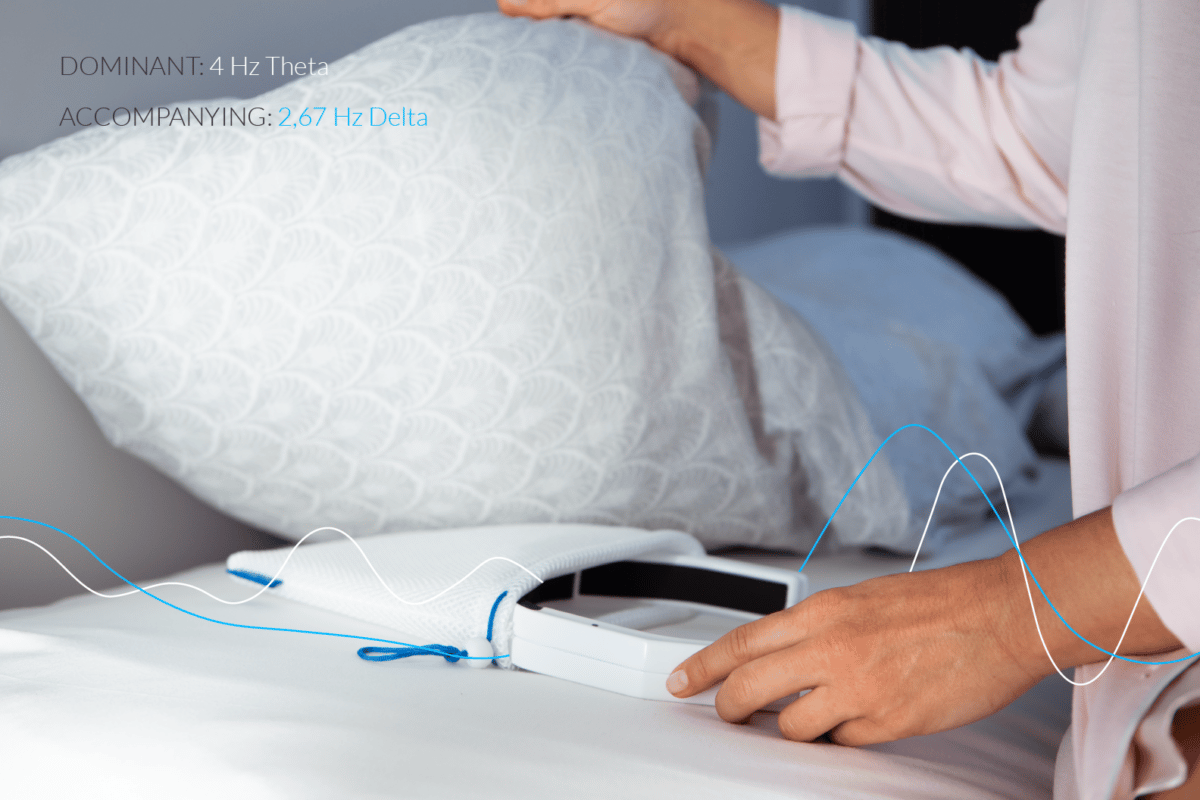
Theta waves (4 – 7 Hz)
Theta rhythm is the frequency of your brainwaves firing 4 to 7 times per second. It occurs when you relax, and is often associated with feeling calmness and with lower anxiety. Theta activity is enhanced when you try to memorize new things or retrieve information from your memory.
- Theta rhythm is also the landmark of the meditative state. Higher levels of theta mark the growing proficiency in meditation.
- Stimulating the brain to produce more theta waves improves memory processes
- Theta waves may occur in some states of trance
- Research with rats revealed that the brain uses theta waves to coordinate navigating through unknown terrain.
Theta waves are used in our predefined programs Theta Meditation, Mindfulness Meditation, and Open-Heart Meditation. To take advantage of Theta in Custom programs, pick a frequency between 4 Hz and 7 Hz. These frequencies boost the practice of meditation or introspection and may help you learn more efficiently by enhancing memory.
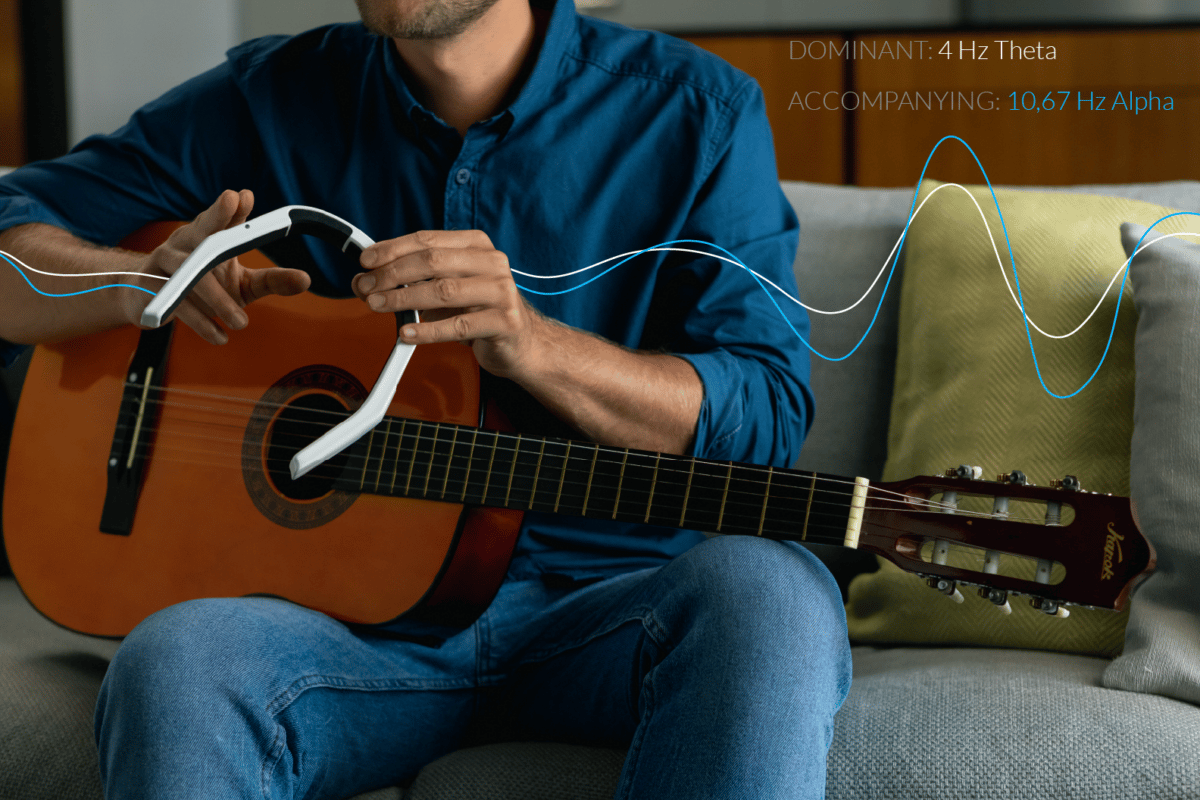
Alpha waves (7 – 13 Hz)
Alpha waves mainly occur when your mind is not focused on any specific task. They get stronger when you are daydreaming and weaker when you try to focus. Those periods when your thoughts are wandering are vital for being creative, as they give your mind some space to explore memory and join pieces of information in a novel way.
- Alpha brainwaves increase when people are looking for creative solutions. Moreover, creative individuals’ brains show more alpha activity.
- When your focus is drawn towards an external stimulus like sound or light, the levels of alpha waves dropdown.
- Alpha waves also occur during meditation, especially in novice practitioners.
- Inducing alpha waves helps in relaxation
Alpha waves are used in our predefined program Quiet Mind Meditation, Meditation for Calming & Synchronization, and Deep Relaxation. To take advantage of Alpha in Custom programs, pick a frequency between 7 Hz and 13 Hz. These frequencies help us with combatting stress, and they stimulate the regeneration of tissue.
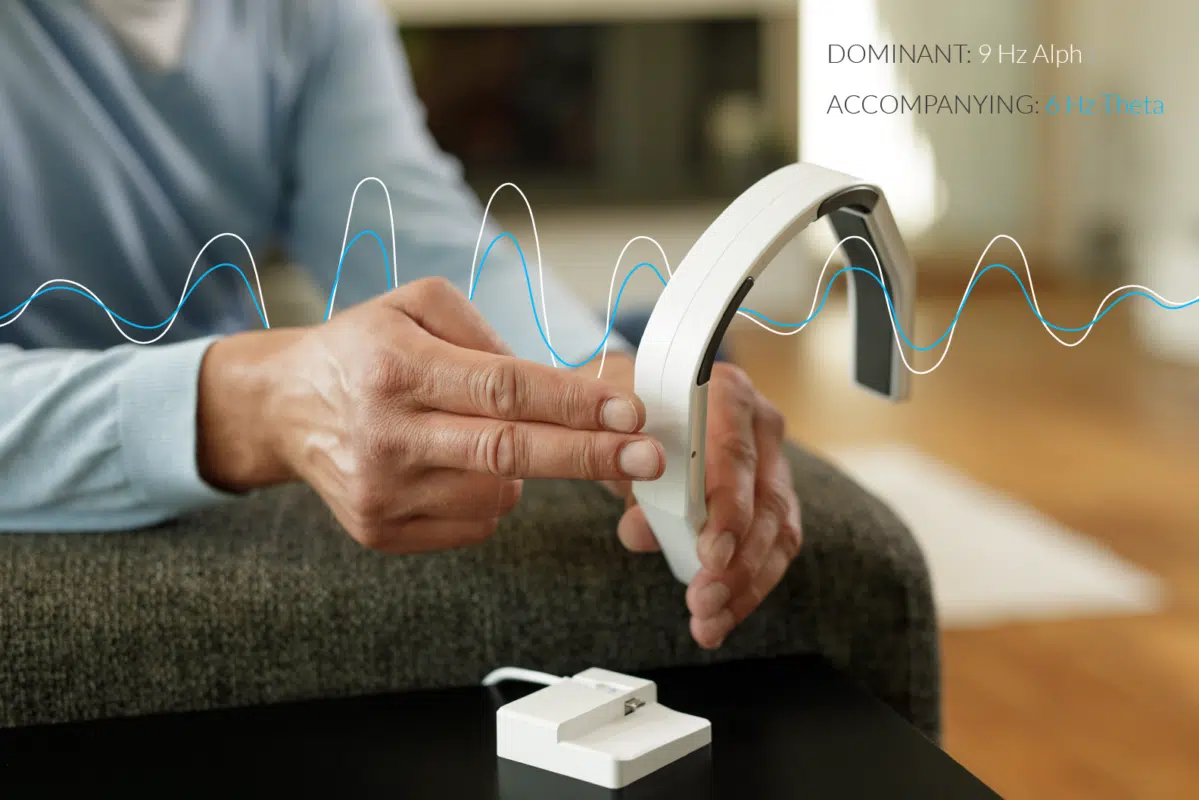
Beta Waves (13 – 30 Hz)
Beta waves occur mainly when you are concentrated and fully engaged in what you’re doing. Their levels increase when you are alert and drop down when you’re drowsy. Beta waves serve to control your attention, regulating what you think about.
- When you actively choose to do something, for example, to read this text, beta activity increases.
- Beta rhythm acts like a brake on the contents of your thoughts, regulating which information stored in your working memory will influence your behavior.
- Beta waves are also linked with anxiety and stress, as your brain switches to higher activity whenever you’re afraid, angry, or worried.
Beta waves are used in our predefined program Enhance Mental Capacity. To take advantage of Beta in Custom programs, pick a frequency between 13 Hz and 30 Hz. These frequencies enhance alertness and vigilance.
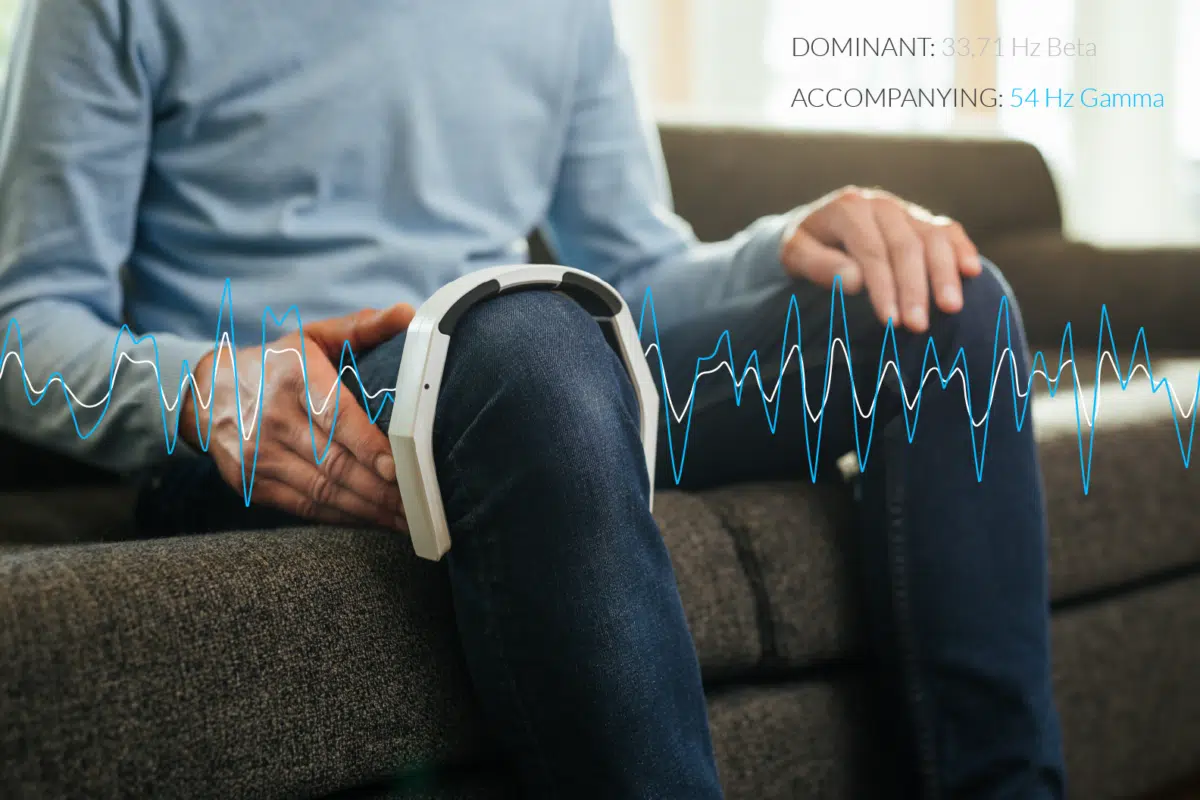
Gamma waves (30 – 100 Hz)
Gamma are the fastest brainwaves, oscillating with a frequency of 30 to 100 Hz. They occur when distant parts of the brain fire in a harmonious way, marking the simultaneous processing of complex information which happens when you are performing demanding mental tasks.
-
- When you have a moment of insight, coming up with an answer for an intellectual riddle or problem, a short flash of gamma appears in your brain.
- Meditation causes an increase in gamma. Among senior meditators, gamma waves are present not only during contemplative practice but also when they are resting or doing everyday tasks.
- Levels of gamma brainwaves increase during lucid dreaming. Furthermore, lab experiments had shown that it’s possible to induce lucid dreams by stimulating the brain to produce more gamma waves.
Gamma waves are used in our predefined programs Focus Meditation, Lucid Dreaming, and Pain Control. To take advantage of Gamma in Custom programs, pick a frequency between 30 Hz and 100 Hz. These frequencies help us process demanding information.
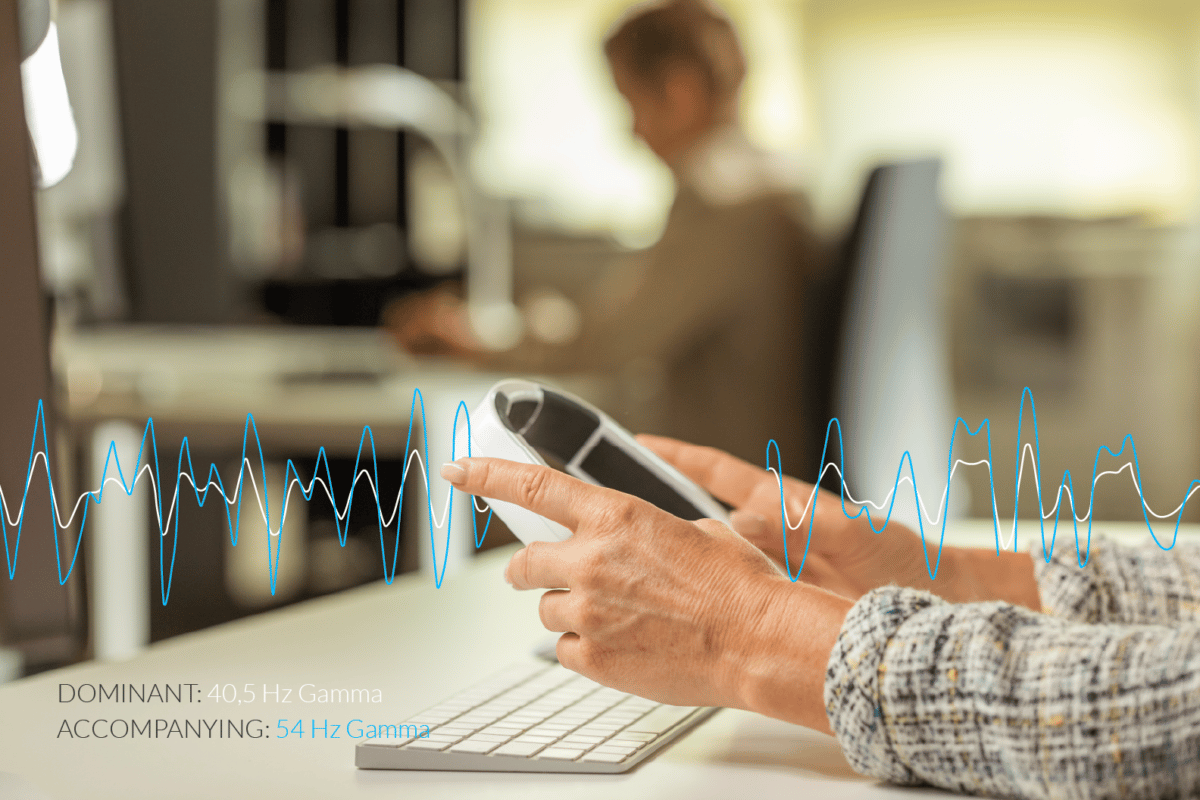
References
Kim, Gulati, T., & Ganguly, K. (2019). Competing Roles of Slow Oscillations and Delta Waves in Memory Consolidation versus Forgetting. Cell, 179(2), 514–526.e13. https://doi.org/10.1016/j.cell.2019.08.040
Frohlich, Toker, D., & Monti, M. M. (2021). Consciousness among delta waves: a paradox? Brain (London, England : 1878), 144(8), 2257–2277. https://doi.org/10.1093/brain/awab095
Pelka, Jaenicke, C., & Gruenwald, J. (2001). Impulse magnetic-field therapy for insomnia: A double-blind, placebo-controlled study. Advances in Therapy, 18(4), 174–180.https://doi.org/10.1007/BF02850111
Roberts, Clarke, A., Addante, R. J., & Ranganath, C. (2018). Entrainment enhances theta oscillations and improves episodic memory. Cognitive Neuroscience, 9(3-4), 181–193. https://doi.org/10.1080/17588928.2018.1521386
Aghajan, Schuette, P., Fields, T. A., Tran, M. E., Siddiqui, S. M., Hasulak, N.R., Tcheng, T. K., Eliashiv, D., Mankin, E. A., Stern, J., Fried, I., & Suthana, N. (2017). Theta Oscillations in the Human Medial Temporal Lobe during Real-World Ambulatory Movement. Current Biology, 27(24), 3743–3751.e3. https://doi.org/10.1016/j.cub.2017.10.062
Lagopoulos et al. Increased Theta and Alpha EEG Activity During Nondirective Meditation. The Journal of Alternative and Complementary Medicine, 2009; 15 (11): 1187 DOI: https://dx.doi.org/10.1089/acm.2009.0113″
Dadashi, M., Birashk, B., Taremian, F., Asgarnejad, A. A., & Momtazi, S. (2015). Effects of Increase in Amplitude of Occipital Alpha & Theta Brain Waves on Global Functioning Level of Patients with GAD. Basic and clinical neuroscience, 6(1), 14–20.
Lustenberger, Boyle, M. R., Foulser, A. A., Mellin, J. M., & Fröhlich, F. (2015). Functional role of frontal alpha oscillations in creativity. Cortex, 67, 74–82.
https://doi.org/10.1016/j.cortex.2015.03.012
Makada, Ozair, D., Mohammed, M., & Abellanoza, C. (2016). Enhancing Memory Retention by Increasing Alpha and Decreasing Beta Brainwaves using Music. ACM International Conference Proceeding Series, 29-, 1–4. https://doi.org/10.1145/2910674.2935851
https://news.mit.edu/2018/new-study-reveals-how-brain-waves-control-working-memory-0126
Yudy Hendrayana, Jajat Darajat Kusumah Negara, Nuryadi, Agus Gumilar, Martina Lesyiana , “The Impact of Beta Brain Waves in Improving Cognitive Function through Brain Jogging Applications,” International Journal of Human Movement and Sports Sciences, Vol. 8, No. 6A, pp. 73-77, 2020.
https://www.scientificamerican.com/article/what-is-the-function-of-t-1997-12-22/
Goleman, & Davidson, R. J. (2017). Altered traits : science reveals how meditation changes your mind, brain, and body. Avery.
Cahill. (2014). Gamma brainwaves in the prefrontal cortex: A grounded theory study to explore the associated subjective experiences. ProQuest Dissertations Publishing.
Voss, U., Holzmann, R., Hobson, A., Paulus, W., Koppehele-Gossel, J., Klimke, A., & Nitsche, M. (2014). Induction of self-awareness in dreams through frontal low current stimulation of gamma activity. Nature Neuroscience, 17(6),
Disclaimer
NeoRhythm has not been evaluated by the FDA. These products do not claim to diagnose, treat, cure, or prevent any medical conditions. Always consult your medical doctor regarding any health concerns.

